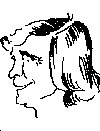[1900:] Of the following song, brimful of Scottish cynical humour, very cleverly expressed, there are several spurious sets. The most nearly perfect is that inserted in Johnson's "Museum" [...]. In the 'Tea Table Miscellany' Ramsay has a song to the tune of Tibbie Fowler In the Glen, which proves that the air at least is old. A fragment of the words is given in Herd's Collection of 1776, but the first complete copy appeared in the sixth volume, as I have said, of Johnson's "Museum". The authorship has been ascribed to a Rev. Dr. Strachan, a minister of Carnwath, but David Laing says there has been no minister of Carnwath of that name for at least the last 300 years.
There is some reason for believing that Tibbie was a real personage, and tradition at Leith points to the person in a certain Isobel Fowler, who was married to a son of Logan of Restalrig, the conspirator, in the 17th century. A house which is believed to have belonged to the pair, having the date 1636, is pointed out in the Sheriffbrae in Leith. It happens that tradition here indicates persons who at least actually existed. That George Logan, son of the conspirator, wedded Isobel Fowler, daughter of Ludowick Fowler of Burncastle, is stated on authentic grounds by Nisbet ("Heraldry", i. 202).
Whether, however, Isobel had previously been the subject of extensive competition among the opposite sex, or sank into the arms of Logan without a sigh from herself or others, there is no evidence. Neither is there any authentic account of the date of the composition. Dr. Robert Chambers says it does not appear to be in a style earlier than the reign of George I [1714-27], and I think he is right. [...]
The lesson of the song, which is clearly obvious, is the same as we find expressed with equal power and luminous effect, in the subsequent measures of Jenny's Bawbee and Kate Dalrymple [...]. And for all three the main idea is had in these cleverly pointed lines: [verse 6]. (Ford, Histories 248ff)



 Susannes Folksong-Notizen English Notes
Susannes Folksong-Notizen English Notes

